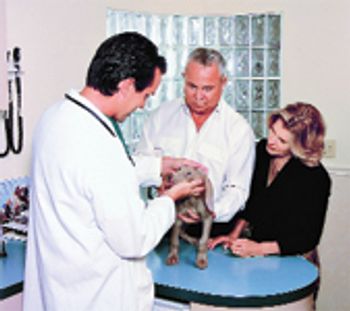
After 34 years in an outdated building, this doctor decided to match the facility to the level of medicine he practiced. The result: Business doubled.

After 34 years in an outdated building, this doctor decided to match the facility to the level of medicine he practiced. The result: Business doubled.
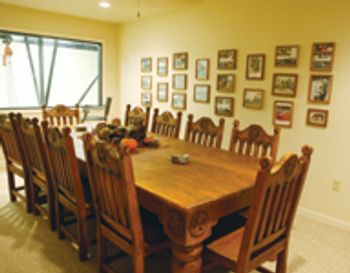
The owners say they'd be happy to live in their new equine practice. Here's how they achieved this level of comfort.
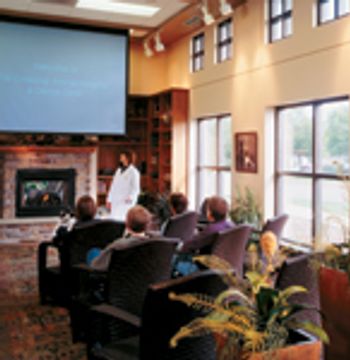
Baby steps won't get you the facility of your dreams, these doctors say. Take the plunge, anticipate your future needs, and center the entire plan on your practice mission.

All doctors who plan to build hear from colleagues who've been there before that they should build bigger than they think they need to. Drs. Kate Knutson and Steve Barghusen took those words to heart--working in an extra 3,700 square feet for future expansion.
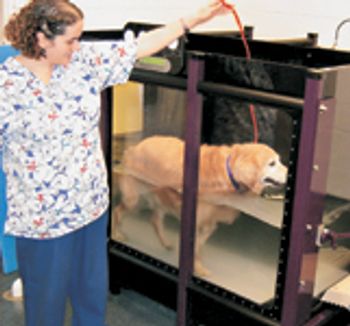
Setting goals for saving and developing a plan early helped these doctors develop the perfect new facility for West Park Animal Hospital just six inches away.
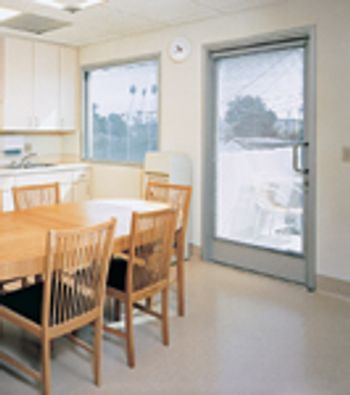
A new design that emphasizes natural light and delivers a commanding presence in the neighborhood led to a 40 percent increase in business for the 5,750-square-foot Century Veterinary Group in Los Angeles.
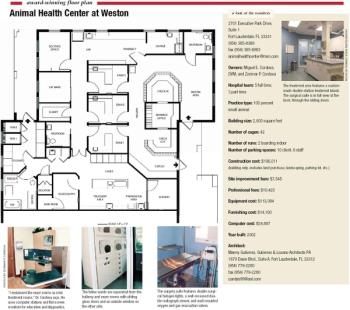
It's not smoke and mirrors, but glass and an efficient floor plan that make Animal Health Center at Weston, a 2,600-square-foot practice, seem larger than life.

"If your clinic stinks, clients may worry that your medical care stinks, too," says Mark Hafen, AIA, an architect with Animal Arts/Gates Hafen Cochrane in Boulder, Colo. "You can't prevent noise and odors from occurring, but you can prevent them from spreading." Hafen, a Veterinary Economics Editorial Advisory Board member, suggests that you:
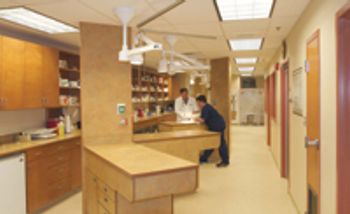
In a city famous for its parties and rich with history, Metairie Small Animal Hospital fits right in. But don't let the grandeur fool you; practices of all sizes can apply the strategies that make this a terrific hospital.

Choosing your architect is one of the most important things you'll do when building or remodeling your practice. Your architect sets the pace for the project--and you'll have enough stress without suffering from communication problems with this key player. Here's what to do.
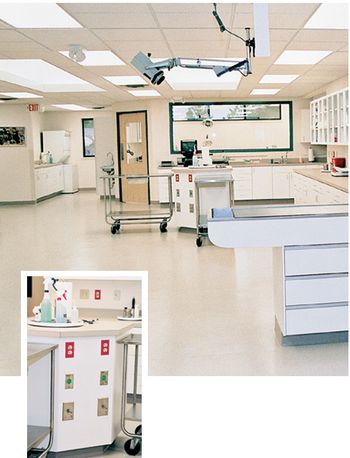
This doctor showed flexibility when her plans for Northeast Cat & Dog Hospital hit roadblocks erected by city engineers. And her patience, careful planning, and faith led her to a facility she says is "perfect."

Dr. Karyl Ropko worked closely with the SBA to obtain a building loan. Here are some tips she learned along the way and the steps she took to smooth the road:
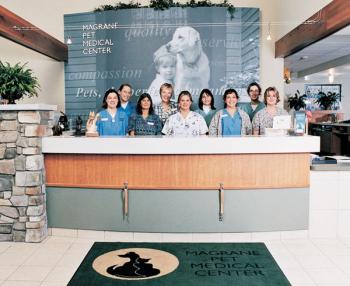
Asking clients for input and allowing staff members to plan the new facility made for a winning combination at Magrane Pet Medical Center.
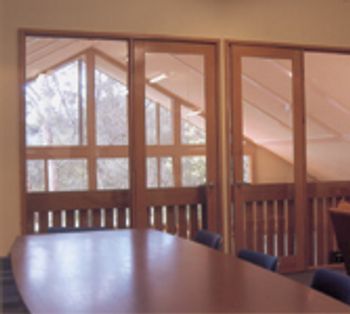
Building a spacious, staff-friendly hospital is the best advertisement for high-quality team members, say the owners of Eltham Central Veterinary Hospital.

Renovating an empty two-story building across the street helped this feline practice attract clients, which boosted practice revenue and helped improve the quality of care Dr. Diane Steinberg offered.

The reasons for building new practices are as varied as the doctors who build them. Some want space for new services. Some want to reflect their medical style. Some want it all. Dr. Mark G. Romain, though, had a humble goal: to build a hospital with a functional floor plan.

Building a hospital is usually an effort of love-and a project you expect to enjoy for years. But Dr. Frank A. Klimitas built his new hospital, a historic building renovation, because of business needs rather than to fulfill a dream.

For years Dr. Susan M. Baker had heard colleagues and consultants tout the benefits of adding profit centers. But her old hospital just wasn't big enough to add any more services. So in 1999, when she outgrew the facility she had leased since 1990, she started working on plans for a new hospital. At 6,200 square feet, her new facility offers space for the additional services she dreamed of offering.
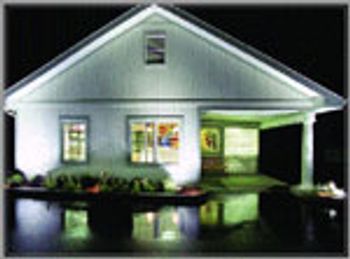
Innovative space-saving solutions, a flawless floor plan, and lots of love went into designing the 1,800-square-foot Landen-Maineville Animal Hospital.

When Dr. Dermot Jevens, Dipl. ACVS, moved from Pittsburgh to Greenville, S.C., in 1997, he decided he needed to get to know the area before building a hospital. So he leased space for his specialty practice from an emergency clinic. Animal Emergency Clinic (AEC), owned by 37 shareholders, welcomed Dr. Jevens and Upstate Veterinary Specialists (UVS) into the AEC facility.

If you think it takes $50,000 to update your facility, think again. We've got project ideas for limited budgets, from free to $6,000. Just check out this list:

Dr. Steven G. Paul had owned three practices before he built his fourth. And while he had commissioned work on his previous facilities, Wiles Road Animal Hospital in Coral Springs, Fla., is the first practice he has built from the ground up.

I always knew I wanted to own a practice, but I never guessed that the perfect location would be a strip mall," says Dr. Jean M. Oberg, owner of My Animal Hospital of North Dover in Toms River, N.J. "In 1984, I started cutting hospital design articles out of Veterinary Economics, and when it came time to build, I had hundreds of designs."

In the spring of 1997, Dr. William J. Moyle Jr. and his wife, Nancy, decided to build a practice closer to their home south of Denver. And four years later they broke ground on a new facility. During the building process, Veterinary Centers of America offered to buy their existing 14-year-old practice, and Dr. Moyle agreed.

“Practice owners want to put their best foot forward, which makes the hospital foyer, reception area, and waiting area the most popular for remodel projects,” says Dan Chapel, AIA, NCARB, owner of Chapel and Associates Architecture in Little Rock, Ark., and a Veterinary Economics Editorial Advisory Board member. “Luckily, those areas are the easiest projects to tackle.”

Q. I've owned a small animal practice in a suburb for nearly a year, and business is fair. There's one big problem, though: No one can find my practice. It's not on a main thoroughfare or a corner lot, so we don't attract many new clients--if any--from drive-by traffic. Even my established clients complain the hospital's too far off the beaten path. Are we sunk in this location? Is there anything we can do to try and make it work?

Q. I'm considering building my own clinic. What should I ask when hiring an architect? A. Hiring the right architect is one of the most important decisions you'll make during the building process, say Sal Longo Jr. and Michael Crosby, co-owners of Crosby Longo Architecture studio in New Orleans, La., and designers of the 2000 Hospital of the Year.

Q. I want to move my veterinary practice from a strip-mall leasehold to an adjacent property that the mall owner recently bought to expand the shopping center. I can either rent a larger leasehold in the new shopping center or lease part of the land. Is it wise for me to lease the land while owning the freestanding building on it?